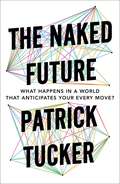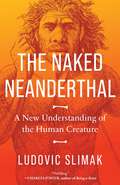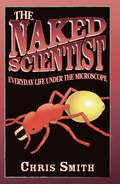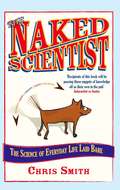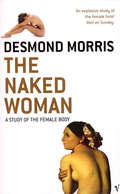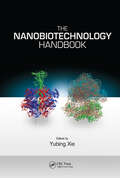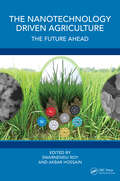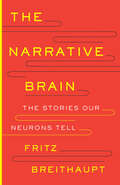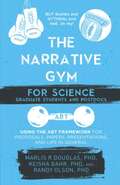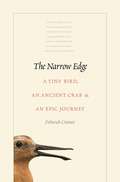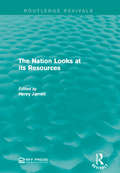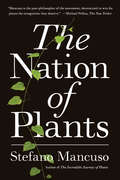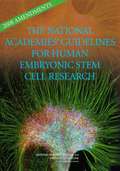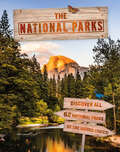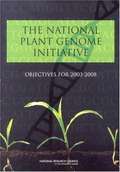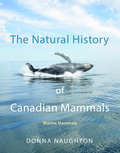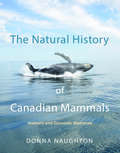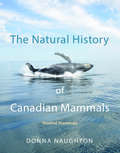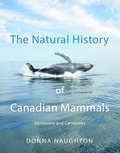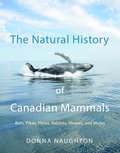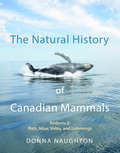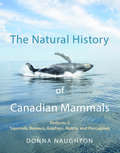- Table View
- List View
The Naked Future
by Patrick TuckerIn the past, the future was opaque--the territory of fortune-tellers, gurus, and dubious local TV weathermen. But thanks to recent advances in computing and the reams of data we create through smartphone and Internet use, prediction models for individual behavior grow smarter and more sophisticated by the day. Whom you should marry, whether you'll commit a crime or fall victim to one, if you'll contract a specific strain of flu--even your precise location at any given moment years into the future--are becoming easily accessible facts. the naked future is upon us, and the implications are staggering. Patrick Tucker draws on stories from health care to urban planning to online dating to reveal the shape of a future that's ever more certain. In these pages you'll meet scientists and inventors who can predict your behavior based on your friends' Twitter updates. They are also hacking the New York City sewer system to predict environmental conditions, anticipating how much the weather a year from now will cost an individual farmer, figuring out the time of day you're most likely to slip back into a bad habit, and guessing how well you'll do on a test before you take it. You'll learn how social networks like Facebook are using your data to turn you into an advertisement and why the winning formula for a blockbuster movie is more predictable than ever. The rise of big data and predictive analytics means that governments and corporations are becoming much more effective at accomplishing their goals and at much less cost. Tucker knows that's not always a good thing. But he also shows how we've gained tremendous benefits that we have yet to fully realize. Thanks to the increased power of predictive science, we'll be better able to stay healthy, invest our savings more wisely, learn faster and more efficiently, buy a house in the right neighborhood at the right time, avoid crime, thwart terrorists, and mitigate the consequences of natural disasters. What happens in a future that anticipates your every move? the surprising answer: we'll live better as a result. 'Where I saw a thrilling and historic transformation in the world's oldest idea--the future--other people saw only Target, Facebook, Google, and the government using their data to surveil, track, and trick them . . . But in fact, your data is your best defense against coercive marketing and intrusive government practices. Your data is nothing less than a superpower waiting to be harnessed. ' from the Introduction
The Naked Future
by Patrick Tucker"A thorough yet thoroughly digestible book on the ubiquity of data gathering and the unraveling of personal privacy." --Daniel Pink, author of DriveThanks to recent advances in technology, prediction models for individual behavior grow more sophisticated by the day. Whether you'll marry, commit a crime or fall victim to one, or contract a disease are becoming easily accessible facts. The naked future is upon us, and the implications are staggering.Patrick Tucker draws on fascinating stories from health care to urban planning to online dating. He shows how scientists can predict your behavior based on your friends' Twitter updates, anticipate the weather a year from now, figure out the time of day you're most likely to slip back into a bad habit, and guess how well you'll do on a test before you take it.Tucker knows that the rise of Big Data is not always a good thing. But he also shows how we've gained tremendous benefits that we have yet to fully realize.g. Patrick Tucker draws on stories from health care to urban planning to online dating to reveal the shape of a future that's ever more certain. In these pages you'll meet scientists and inventors who can predict your behavior based on your friends' Twitter updates. They are also hacking the New York City sewer system to predict environmental conditions, anticipating how much the weather a year from now will cost an individual farmer, figuring out the time of day you're most likely to slip back into a bad habit, and guessing how well you'll do on a test before you take it. You'll learn how social networks like Facebook are using your data to turn you into an advertisement and why the winning formula for a blockbuster movie is more predictable than ever. The rise of big data and predictive analytics means that governments and corporations are becoming much more effective at accomplishing their goals and at much less cost. Tucker knows that's not always a good thing. But he also shows how we've gained tremendous benefits that we have yet to fully realize. Thanks to the increased power of predictive science, we'll be better able to stay healthy, invest our savings more wisely, learn faster and more efficiently, buy a house in the right neighborhood at the right time, avoid crime, thwart terrorists, and mitigate the consequences of natural disasters. What happens in a future that anticipates your every move? The surprising answer: we'll live better as a result.
The Naked Neanderthal: A New Understanding of the Human Creature
by Ludovic SlimakA riveting scientific journey exploring the enigma of the Neanderthal and the species&’ unique form of intelligence.What do we really know about our cousins, the Neanderthals? For over a century we saw Neanderthals as inferior to Homo Sapiens. More recently, the pendulum swung the other way and they are generally seen as our relatives: not quite human, but similar enough, and still not equal. Now, thanks to an ongoing revolution in palaeoanthropology in which he has played a key part, Ludovic Slimak shows us that they are something altogether different -- and they should be understood on their own terms rather than by comparing them to ourselves. As he reveals in this stunning book, the Neanderthals had their own history, their own rituals, their own customs. Their own intelligence, very different from ours. Slimak has travelled around the world for the past thirty years to uncover who the Neanderthals really were. A modern-day Indiana Jones, he takes us on a fascinating archaeological investigation: from the Arctic Circle to the deep Mediterranean forests, he traces the steps of these enigmatic creatures, working to decipher their real stories through every single detail they left behind. A thought-provoking adventure story, written with wit and verve, The Naked Neanderthal shifts our understanding of deep history -- and in the process reveals just how much we have yet to learn.
The Naked Scientist: Everyday Life Under the Microscope
by Chris SmithWhy use expensive beauty products when you can moisturise with jellyfish? Have you ever suspected pollution was to blame for your children's plummeting IQ? Ready to take a sea change . . . on Mars? And how about chopping an onion that doesn't make you cry? This is the perfect present for enquiring minds. Compelling, quirky and packed fully of curious facts, The Naked Scientist: Life Under the Microscope is a treasure trove of cutting-edge research, far-flung factoids and the ability to see into our scientific future, answering those fascinating questions you never thought to ask.
The Naked Scientist: The Science of Everyday Life Laid Bare
by Dr Chris SmithIs it possible to tell how happy a dog is by watching the way it wags its tail? Why is the Eiffel Tower 15 centimetres taller in mid-summer than it is in mid-winter? Does sound travel faster in water or air? Can one really read other people like a book? Why do so many people hate eating their greens? Firmly in the tradition of DOES ANYTHING EAT WASPS? new scientific kid on the block Chris Smith - aka THE NAKED SCIENTIST - explores present-day predicaments and tomorrow's technologies, from the most surprising facts to the most innovative new inventions, from staggering stats to serious developments that will transform the world around us.In this fascinating book, top scientist Chris Smith uses his wit and charm to lift the lid on the curious, crazy and compelling - and answer those questions you never thought to ask.
The Naked Woman: A Study Of The Female Body
by Desmond MorrisThe human female form is the brilliant end-point of millions of years of evolution, loaded with amazing adjustments and subtle refinements. It is the most remarkable organism on the planet. At different times and in different places, human societies have tried to improve on nature, modifying and embellishing the female form in a thousand different ways. In this new study, people-watcher Desmond Morris turns his skill and attention to the female form and takes the reader on a guided tour 'from head to toe'. Highlighting the evolutionary functions of biological features that all women share, Morris explores the enhancements and constraints that human societies have developed in the quest for control and perfection of the female form. Written from a zoologist's perspective and packed full of scientific fact, fascinating anecdote and thought-provoking conclusions, The Naked Woman builds on Desmond Morris's unrivalled experience as an observer of the human animal.
The Nanobiotechnology Handbook
by Yubing XieA thorough overview of nanobiotechnology and its place in advances in applied science and engineering, The Nanobiotechnology Handbook combines contributions from physics, bioorganic and bioinorganic chemistry, molecular and cellular biology, materials science, and medicine as well as from mechanical, electrical, chemical, and biomedical engineering to address the full scope of current and future developments. World-class experts discuss the role of nanobiotechnology in bioanalysis, biomolecular and biomedical nanotechnology, biosensors, biocatalysis and biofuel, and education and workforce development. It includes downloadable resources that contain all figures in the book.The book begins with discussions of biomimetic nanotechnology, including a comprehensive overview of DNA nanostructure and DNA-inspired nanotechnology, aptamer-functionalized nanomaterials as artificial antibodies, artificial enzymes, molecular motors, and RNA structures and RNA-inspired nanotechnology. It shows how nanotechnology can be inspired by nature as well as adverse biological events in diagnostic and therapeutic development. From there, the chapters cover major important and widely used nanofabrication techniques, applications of nanotechnology for bioprocessing followed by coverage of the applications of atomic force microscopy (AFM), optical tweezers and nanofluidics as well as other nanotechnology-enabled biomolecular and cellular manipulation and detection. Focusing on major research trends, the book highlights the importance of nanobiotechnology to a range of medical applications such as stem cell technology and tissue engineering, drug development and delivery, imaging, diagnostics, and therapeutics. And with coverage of topics such as nanotoxicity, responsible nanotechnology, and educational and workforce development, it provides a unique overview and perspective of nanobiotechnology impacts from a researcher’s, entrepreneur’s, economist’s and educator’s point of view. It provides a resource for current applications and future development of nanobiotechnology.
The Nanotechnology Driven Agriculture: The Future Ahead
by Swarnendu Roy and Akbar HossainNanotechnology is believed to accelerate our fight to sustain and enhance crop productivity for the ever-increasing world population. It has been reckoned as one of the safest and most cost-efficient techniques to boost crop productivity in the future. The ever-increasing state-of-the-art availability of various nanomaterials has allowed us to pursue their beneficial properties in agronomy. Nanotechnology will help minimize the dependency on chemical fertilizers and existing crop production techniques that have already been exploited to their maximum potential. Therefore, in the present context, it could well be realized that agriculture will be driven by nanotechnology in the future.This book focuses on the application of nanotechnology for enhancing crop production through the application of nanofertilizers or nanocomposites. Several avenues of nanotechnology are beneficial in improving crop productivity in a sustainable manner, which has been presented in a comprehensive way. The book also delves into the mechanistic view of nanoparticle functioning and its role in stress alleviation. In addition, the book presents some recent insights into the application of nanotechnology for post-harvest management, stress tolerance and usage as nanobiosensors.Broadly, the book will encompass the following advances in the field, distinguishing it from other published volumes. The salient features include:· Role of nanoparticles in improving abiotic stress tolerance in plants.· Role of nanoparticles in protection against pathogens and pests.· Mechanism of nanoparticle-induced plant responses.· Synthesis and modification of nanoparticles to enhance their biological efficacy.· Prospects of nanofertilizers, nanoformulations, nanopesticides, etc., and their beneficial attributes.This book, therefore, presents this emerging topic and the most recent innovations in this field for postgraduate students, researchers and faculty members working in the fields of plant science, microbiology, biotechnology, agricultural sciences, etc.
The Napoleonic Wars 1803-1815
by Dr David GatesKnown collectively as the 'Great War', for over a decade the Napoleonic Wars engulfed not only a whole continent but also the overseas possessions of the leading European states. A war of unprecedented scale and intensity, it was in many ways a product of change that acted as a catalyst for upheaval and reform across much of Europe, with aspects of its legacy lingering to this very day. There is a mass of literature on Napoleon and his times, yet there are only a handful of scholarly works that seek to cover the Napoleonic Wars in their entirety, and fewer still that place the conflict in any broader framework. This study redresses the balance. Drawing on recent findings and applying a 'total' history approach, it explores the causes and effects of the conflict, and places it in the context of the evolution of modern warfare. It reappraises the most significant and controversial military ventures, including the war at sea and Napoleon's campaigns of 1805-9. The study gives an insight into the factors that shaped the war, setting the struggle in its wider economic, cultural, political and intellectual dimensions.
The Narrative Brain: The Stories Our Neurons Tell
by Fritz Alwin BreithauptAn investigation of the emotional power of narrative that illuminates the relationship between the human brain and the stories we tell As humans, we think in stories—stories that allow us to feel and share emotions. In order for this phenomenon to work, our brains and the ways in which we tell stories must be attuned to each other. But how exactly does this happen? Tapping into the essence of thinking in stories, Fritz Breithaupt draws on the latest scientific research, including a retelling study (comparable to the telephone game) with more than 12,000 participants, and experiments in which ChatGPT functions as storyteller. This wide-ranging study includes analyses of political history, novels, fairy tales, and everyday office gossip; proposes a new theory of narrative that focuses on emotions and affects; and hypothesizes on the evolution of narratives among our hominid ancestors. Redefining us as beings who anchor ourselves in the world through narratives, Breithaupt introduces a new kind of psychology that cuts to the core of how and why humans feel the need to tell stories.
The Narrative Gym for Science Graduate Students and Postdocs: Using the ABT Framework for Proposals, Papers, Presentations, and Life in General
by Randy Olson Marlis Douglas Keisha BahrIt’s ABT Time: Science consists of equal parts research and communication, AND if you do a good job with communication then your research will reach its full impact, BUT communication can’t be mastered in a day, THEREFORE get thee to the Narrative Gym with this book! <p><p> What is the ABT? Only the most important communications tool you’ll ever need. It provides the core of narrative structure, which is what makes the difference between whether you bore or confuse an audience versus interest and engage them. The ABT is about the three forces of narrative (agreement, contradiction, consequence) which are embodied in the three words of the ABT (and, but, therefore). <P><P> In this short, simple, practical book three scientists present what they have learned about the use of the ABT with science graduate students and postdocs. It provides an introduction to the ABT with an explanation of how to apply it to everything from proposals, papers and presentations to your life in general.
The Narrow Edge
by Deborah CramerThousands of ravenous tiny shorebirds race along the water's edge of Delaware Bay, feasting on pin-sized horseshoe-crab eggs. Fueled by millions of eggs, the migrating red knots fly on. When they arrive at last in their arctic breeding grounds, they will have completed a near-miraculous 9,000-mile journey that began in Tierra del Fuego. Deborah Cramer followed these knots, whose numbers have declined by 75 percent, on their extraordinary odyssey from one end of the earth to the other--from an isolated beach at the tip of South America all the way to the icy tundra. In her firsthand account, she explores how diminishing a single stopover can compromise the birds' entire journey, and how the loss of horseshoe crabs--ancient animals that come ashore but once a year--threatens not only the survival of red knots but also human well-being: the unparalleled ability of horseshoe-crab blood to detect harmful bacteria in vaccines, medical devices, and intravenous drugs safeguards human health. Cramer offers unique insight into how, on an increasingly fragile and congested shore, the lives of red knots, horseshoe crabs, and humans are intertwined. She eloquently portrays the tenacity of small birds and the courage of many people who, bird by bird and beach by beach, keep red knots flying.
The Nation Looks at its Resources (Routledge Revivals)
by Henry JarrettThe Nation Looks at its Resources records the key points of the Mid-Century Conference on Resources for the Future held in Washington in 1953. Originally published in 1954, this report reveals the concern felt by those attending the conference about the mounting pressure on our resources from the growing population and expanding Economy. Rather than taking a specific view point, the discussions cover a wide range of resource issues from multiple angles with an unintended emphasis on the need for research, education and cooperation to better understand the resource issues facing the U.S and the rest of the world after World War II. This title will be of interest to students of Environmental Studies.
The Nation of Plants
by Stefano MancusoIn this playful yet informative manifesto, a leading plant neurobiologist presents the eight fundamental pillars on which the life of plants—and by extension, humans—rests.Even if they behave as though they were, humans are not the masters of the Earth, but only one of its most irksome residents. From the moment of their arrival, about three hundred thousand years ago—nothing when compared to the history of life on our planet—humans have succeeded in changing the conditions of the planet so drastically as to make it a dangerous place for their own survival. The causes of this reckless behavior are in part inherent in their predatory nature, but they also depend on our total incomprehension of the rules that govern a community of living beings. We behave like children who wreak havoc, unaware of the significance of the things they are playing with. In The Nation of Plants, the most important, widespread, and powerful nation on Earth finally gets to speak. Like attentive parents, plants, after making it possible for us to live, have come to our aid once again, giving us their rules: the first Universal Declaration of Rights of Living Beings written by the plants. A short charter based on the general principles that regulate the common life of plants, it establishes norms applicable to all living beings. Compared to our constitutions, which place humans at the center of the entire juridical reality, in conformity with an anthropocentricism that reduces to things all that is not human, plants offer us a revolution.
The National Academies' Guidelines For Human Embryonic Stem Cell Research
by National Research Council Institute of Medicine of the National AcademiesIn 2005, the National Academies released the report Guidelines for Human Embryonic Stem Cell Research, which offered a common set of ethical standards for a field that, due to the absence of comprehensive federal funding, was lacking national standards for research. In order to keep the Guidelines up to date, given the rapid pace of scientific developments in the field of stem cell research, the Human Embryonic Stem Cell Research Advisory Committee was established in 2006 with support from The Ellison Medical Foundation, The Greenwall Foundation, and the Howard Hughes Medical Institute. As it did in 2007, the Committee identified issues that warranted revision, and this book addresses those issues in a second set of amendments. Most importantly, this book addresses new scientific developments in reprogramming of somatic cells to pluripotency by adding a new section and revising other relevant sections of the Guidelines.
The National Parks: Discover all 62 National Parks of the United States!
by DKGet your kids excited about the great outdoors! This travel guide for kids will highlight the diverse beauty and wonder of the USA's most beautiful natural spaces.From the giant redwoods of Sequoia to the geysers of Yellowstone, this educational book is a fun, child-friendly travel guide that covers all 62 National Parks in the USA.Go on an adventure through America's iconic parks! Bright eye-catching photographs and illustrations and easy-to-read text are the perfect introductions for young nature enthusiasts. Little rangers will learn all kinds of fun facts - like Wrangell-St. Elias National Park in Alaska is bigger than Switzerland - and more.Kids will also learn all about the diverse animals and plant life that you can find in the USA. The educational book features special tips to ensure their visits are safe and fun. Kids will also learn how they can help keep habitats clean during their visits.Young readers will get the inside scoop on all the activities there are to do in each National Park, including rock climbing, river rafting, skiing, horseback riding, and cycling. They will also get insider knowledge about each park, like secret caves and endangered animals to make visits extra special!Discover the Wonders of USA's National ParksThis delightful kid's book is one adventure that you don't want to miss! Go on an epic journey through America's National Parks, from the wide-open spaces of Grand Teton to the iconic Gateway Arch in downtown St. Louis.Explore the fascinating history of all 61 parks, as well as the unique animals and plants that inhabit the vast wilderness. This kid's book is an ideal gift for young nature lovers and future adventurers!This travel guide will take you on a trip through:All 62 of the USA's national parks from the Great Smoky Mountains on the East Coast to the rocky deserts of Joshua Tree in the West.The diverse flora and fauna that you will find in the USA's National Parks.All the fun activities like rock climbing, river rafting, and more that are available in each of the parks.
The National Plant Genome Initiative: Objectives For 2003-2008
by Committee On Objectives For The National Plant Genome Initiative: 2003-2008The National Plant Genome Initiative was launched in 1998 as a long-term project to explore DNA structure and function in plants so that useful properties of plants can be understood, improved, and ultimately harnessed to address national needs, including agriculture, nutrition, energy and waste reduction. Experts in the community were asked to consider how to build on current accomplishments in order to address major questions in plant biology and to make recommendations for objectives for the next five-year phase of the Initiative.
The Nationalization of Scientific Knowledge in the Habsburg Empire, 1848–1918
by Mitchell G. Ash Jan SurmanThis volume challenges the widespread belief that scientific knowledge as such is international. Employing case studies from Austria, Poland, the Czech lands, and Hungary, the authors show how scientists in the late Habsburg Monarchy simultaneously nationalized and internationalized their knowledge.
The Natural History of Canadian Mammals: Cetaceans
by Donna NaughtonThis ebook is a subset of The Natural History of Canadian Mammals, including the sections on whales, dolphins, and porpoises.<P> The Natural History of Canadian Mammals is a beautifully illustrated, up-to-date guide to all 215 known species of mammals in Canada. It features brand-new, full-colour images of each species, as well as stunning photographs from Canadian Geographic magazine's national photography competitions depicting the animals in their natural environments. Along with being a visual treat, this book is jam-packed with information accessible to readers at all levels. Detailed descriptions are provided of each mammal's appearance, habitat, and behavior, while colour maps show their full distribution across Canada, North America, and globally. The book also includes practical guides on tracking and identification for readers who would like to learn how to spot mammals in the wild. Among its most special features is a series of colour plates with vignettes of the Canadian representatives of each group, sized relative to one another for easy comparison and linked to the full species accounts later in the book.<P> Advisory: Bookshare has learned that this book offers only partial accessibility. We have kept it in the collection because it is useful for some of our members. To explore further access options with us, please contact us through the Book Quality link on the right sidebar. Benetech is actively working on projects to improve accessibility issues such as these.
The Natural History of Canadian Mammals: Domestic Animals
by Donna NaughtonThis ebook is a subset of The Natural History of Canadian Mammals, including the sections on domestic animals.<P> The Natural History of Canadian Mammals is a beautifully illustrated, up-to-date guide to all 215 known species of mammals in Canada. It features brand-new, full-colour images of each species, as well as stunning photographs from Canadian Geographic magazine's national photography competitions depicting the animals in their natural environments. Along with being a visual treat, this book is jam-packed with information accessible to readers at all levels. Detailed descriptions are provided of each mammal's appearance, habitat, and behavior, while colour maps show their full distribution across Canada, North America, and globally. The book also includes practical guides on tracking and identification for readers who would like to learn how to spot mammals in the wild. Among its most special features is a series of colour plates with vignettes of the Canadian representatives of each group, sized relative to one another for easy comparison and linked to the full species accounts later in the book.<P> Advisory: Bookshare has learned that this book offers only partial accessibility. We have kept it in the collection because it is useful for some of our members. To explore further access options with us, please contact us through the Book Quality link on the right sidebar. Benetech is actively working on projects to improve accessibility issues such as these.
The Natural History of Canadian Mammals: Horses, Deer, Bison, etc.
by Donna NaughtonThis ebook is a subset of The Natural History of Canadian Mammals, including the sections on horses, deer, bison and animals in the same families.<P> The Natural History of Canadian Mammals is a beautifully illustrated, up-to-date guide to all 215 known species of mammals in Canada. It features brand-new, full-colour images of each species, as well as stunning photographs from Canadian Geographic magazine's national photography competitions depicting the animals in their natural environments. Along with being a visual treat, this book is jam-packed with information accessible to readers at all levels. Detailed descriptions are provided of each mammal's appearance, habitat, and behavior, while colour maps show their full distribution across Canada, North America, and globally. The book also includes practical guides on tracking and identification for readers who would like to learn how to spot mammals in the wild. Among its most special features is a series of colour plates with vignettes of the Canadian representatives of each group, sized relative to one another for easy comparison and linked to the full species accounts later in the book.<P> Advisory: Bookshare has learned that this book offers only partial accessibility. We have kept it in the collection because it is useful for some of our members. To explore further access options with us, please contact us through the Book Quality link on the right sidebar. Benetech is actively working on projects to improve accessibility issues such as these.
The Natural History of Canadian Mammals: Opossums, Wild Cats, Wild Dogs, Bears, Seals, Sea Lions, Walruses, Weasels, Skunks, and Raccoons
by Donna NaughtonThis ebook is a subset of The Natural History of Canadian Mammals, including the sections on Opossums, Wild Cats, Wild Dogs, Bears, Seals, Sea Lions, Walruses, Weasels, Skunks, and Raccoons.<P> The Natural History of Canadian Mammals is a beautifully illustrated, up-to-date guide to all 215 known species of mammals in Canada. It features brand-new, full-colour images of each species, as well as stunning photographs from Canadian Geographic magazine's national photography competitions depicting the animals in their natural environments. Along with being a visual treat, this book is jam-packed with information accessible to readers at all levels. Detailed descriptions are provided of each mammal's appearance, habitat, and behavior, while colour maps show their full distribution across Canada, North America, and globally. The book also includes practical guides on tracking and identification for readers who would like to learn how to spot mammals in the wild. Among its most special features is a series of colour plates with vignettes of the Canadian representatives of each group, sized relative to one another for easy comparison and linked to the full species accounts later in the book.<P> Advisory: Bookshare has learned that this book offers only partial accessibility. We have kept it in the collection because it is useful for some of our members. To explore further access options with us, please contact us through the Book Quality link on the right sidebar. Benetech is actively working on projects to improve accessibility issues such as these.
The Natural History of Canadian Mammals: Pikas, Hares, Rabbits, Shrews, Moles, and Bats
by Donna NaughtonThis ebook is a subset of The Natural History of Canadian Mammals, including the sections on Pikas, Hares, Rabbits, Shrews, Moles, and Bats.<P> The Natural History of Canadian Mammals is a beautifully illustrated, up-to-date guide to all 215 known species of mammals in Canada. It features brand-new, full-colour images of each species, as well as stunning photographs from Canadian Geographic magazine's national photography competitions depicting the animals in their natural environments. Along with being a visual treat, this book is jam-packed with information accessible to readers at all levels. Detailed descriptions are provided of each mammal's appearance, habitat, and behavior, while colour maps show their full distribution across Canada, North America, and globally. The book also includes practical guides on tracking and identification for readers who would like to learn how to spot mammals in the wild. Among its most special features is a series of colour plates with vignettes of the Canadian representatives of each group, sized relative to one another for easy comparison and linked to the full species accounts later in the book.<P> Advisory: Bookshare has learned that this book offers only partial accessibility. We have kept it in the collection because it is useful for some of our members. To explore further access options with us, please contact us through the Book Quality link on the right sidebar. Benetech is actively working on projects to improve accessibility issues such as these.
The Natural History of Canadian Mammals: Rats, Mice, Voles, and Lemmings
by Donna NaughtonThis ebook is a subset of The Natural History of Canadian Mammals, covering rodents and including the sections on Rats, Mice, Voles, and Lemmings. <P> The Natural History of Canadian Mammals is a beautifully illustrated, up-to-date guide to all 215 known species of mammals in Canada. It features brand-new, full-colour images of each species, as well as stunning photographs from Canadian Geographic magazine's national photography competitions depicting the animals in their natural environments. Along with being a visual treat, this book is jam-packed with information accessible to readers at all levels. Detailed descriptions are provided of each mammal's appearance, habitat, and behavior, while colour maps show their full distribution across Canada, North America, and globally. The book also includes practical guides on tracking and identification for readers who would like to learn how to spot mammals in the wild. Among its most special features is a series of colour plates with vignettes of the Canadian representatives of each group, sized relative to one another for easy comparison and linked to the full species accounts later in the book.<P> Advisory: Bookshare has learned that this book offers only partial accessibility. We have kept it in the collection because it is useful for some of our members. To explore further access options with us, please contact us through the Book Quality link on the right sidebar. Benetech is actively working on projects to improve accessibility issues such as these.
The Natural History of Canadian Mammals: Squirrels, Beavers, Gophers, Nutria, and Porcupines
by Donna NaughtonThis ebook is a subset of The Natural History of Canadian Mammals and includes the first section on rodents and features descriptions of squirrels, beavers, gophers, nutria, and porcupines.<P> The Natural History of Canadian Mammals is a beautifully illustrated, up-to-date guide to all 215 known species of mammals in Canada. It features brand-new, full-colour images of each species, as well as stunning photographs from Canadian Geographic magazine's national photography competitions depicting the animals in their natural environments. Along with being a visual treat, this book is jam-packed with information accessible to readers at all levels. Detailed descriptions are provided of each mammal's appearance, habitat, and behavior, while colour maps show their full distribution across Canada, North America, and globally. The book also includes practical guides on tracking and identification for readers who would like to learn how to spot mammals in the wild. Among its most special features is a series of colour plates with vignettes of the Canadian representatives of each group, sized relative to one another for easy comparison and linked to the full species accounts later in the book.<P> Advisory: Bookshare has learned that this book offers only partial accessibility. We have kept it in the collection because it is useful for some of our members. To explore further access options with us, please contact us through the Book Quality link on the right sidebar. Benetech is actively working on projects to improve accessibility issues such as these.
